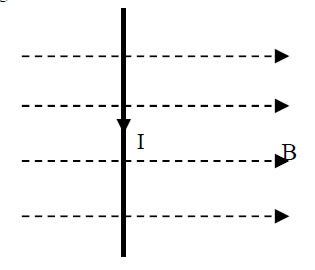Asia-Pacific Forum on Science Learning and Teaching, Volume 19, Issue 1, Article 12 (Jun., 2018) |
In this study, the research design was using the randomized static group comparison design with experimental class and control class. The effectiveness of GIMuR model was tested by using t-test with one tail. There are two types of data in this research that is quantitative and qualitative data. Quantitative data in the form of test results and observation of learning implementation while qualitative data in the form of student interviews.
The population consisted of 128 senior high schools' students of Grade XII in Purworejo, Central Java, Indonesia. The sample was selected by using random cluster sampling. There were 62 (38 female and 24 male) students who divided into experimental class (with N= 32) and control class (with N=30). Students in the experimental class were treated with GIMuR model, and those in control class were treated with traditional learning model. To get deep analyze about students' magnetic force conception, we used interview section with 18 students from the experimental class (11 female and 7 male) that were selected by randomizing.
The data were obtained using testing, observation, and interview. A set of test was used to know the effectiveness of GIMuR model to increasing students' mathematical modeling ability related to the magnetic concept.
The test consists of 15 multiple choices questions with reason based on four indicators of mathematical modeling ability. The concept consists of magnetic force from moving charge and straight current wire in homogeny magnetic field. The test has been tested using product moment correlation and KR-20 with the result of reliability 0.86. Example of question from indicator revealed the problem in the form of field line diagram sketch could see in Table I.
Table I. Example of question from the indicator of mathematical modeling ability
Revealed the problem in the form of field line diagram sketch
A wire is in the magnetic field as in the picture. Where does the magnetic force move on the wire to you?
A. Away
B. Approaching
C. Go right
D. Go left
E. Go up
Give your reason
This case is a straight current wire which is inside the magnetic field, and the students have observed variations of direction B and I.
Variations in the use of hand rules and how the students give the reasons for the rules are the guidelines for assessmentRevealed phenomena in formulas
A charge Q moves with velocity v entering an area containing magnetic field B and electric field E. If the charge is not affected by either magnetic force or electric force, what is the value of the ratio of the strength of the magnetic field and the strength of the electric field in that place!
- QE/V
- QV/E
- QE/QV
- Q/QV
- QV/Q
Students can connect the concept of electric field that has been obtained with the concept of magnetic field by using mathematical, sketch and verbal representation The observation was used to know the implementation of GIMuR model from the teacher and student activities. There were two observers. Observation sheet is containing a checklist of activities in each phase of syntax GIMuR model. A brief explanation of teacher and student activity at each phase can be seen in Table II.
Table II. Teachers and Students' activity at each phase of GIMuR Model
Phase Teacher Activities Student Activities Orientation and Organization - Provide a case that raises students' curiosity
- Guide students to identify problems from topics to build student representation
- Students give their opinions on cases given by teachers with enthusiasm
- Students use various representation in describing their opinions
Sequence and hypothesis - Provides a representational challenge to generate ideas in formulating a temporary answer
- Guides the student to identify the variables that arise from the hypothesis
- Conducting literature review and discussing to formulate temporary answers to the problems faced
- Identify the variables that arise from the hypothesis
Investigation Guide students to carry out a step-by-step investigation, seeking clarity to build mathematical modeling abilities Students search and collect data through libraries and experiments in groups Representation Guide students in representing the results of experimental analysis Representing the results of experimental analysis in mathematical, image and verbal form Evaluation and reflection Helps students analyze and evaluate inquiry processes and their initial hypotheses Make analyze and evaluate inquiry processes and their initial hypotheses in various forms of representation To get in-depth analysis about students' mathematic modeling ability, we used the interview. We modify the question from studied of the representational and contextual problem (Kustusch, 2016). In this step, the interviewer asked a series of follow-up questions:
1. The rules that students use to determine direction of magnetic force
2. The result of multiplication of various directions vector
Descriptive statistics and inferential statistics were used to analyze the data of achievement test by using SPSS-20 package program. Normality and homogenously were controlled by using descriptive statistics. As for inferential statistics, independent samples t-test was used at the end of this study. This test was also employed to see the significant difference between groups.
The results of observation were analyzed by describing the teachers and students activities using frequency, percentage and mean. These activities were dealing with implementation of each step of GIMuR models. The observation was done by two observers. The assessment criteria were obtained by comparing the average scoring result from the two observers with the criteria of assessment in Table III.
Table III. Criteria of The Observation Assessment
Interval Criteria 3.2 < x ≤ 4.00 Very good 2.75 < x ≤3.25 Good 1.75 < x ≤2.75 Poor 1.00 < x ≤1.75 Very poor The result of interviews was used to get information about students' ways of making mathematic modeling of magnetic force direction. This finding was used to evaluate and reflect the implementation of GIMuR model, especially in mathematical modeling in magnetic concepts.

